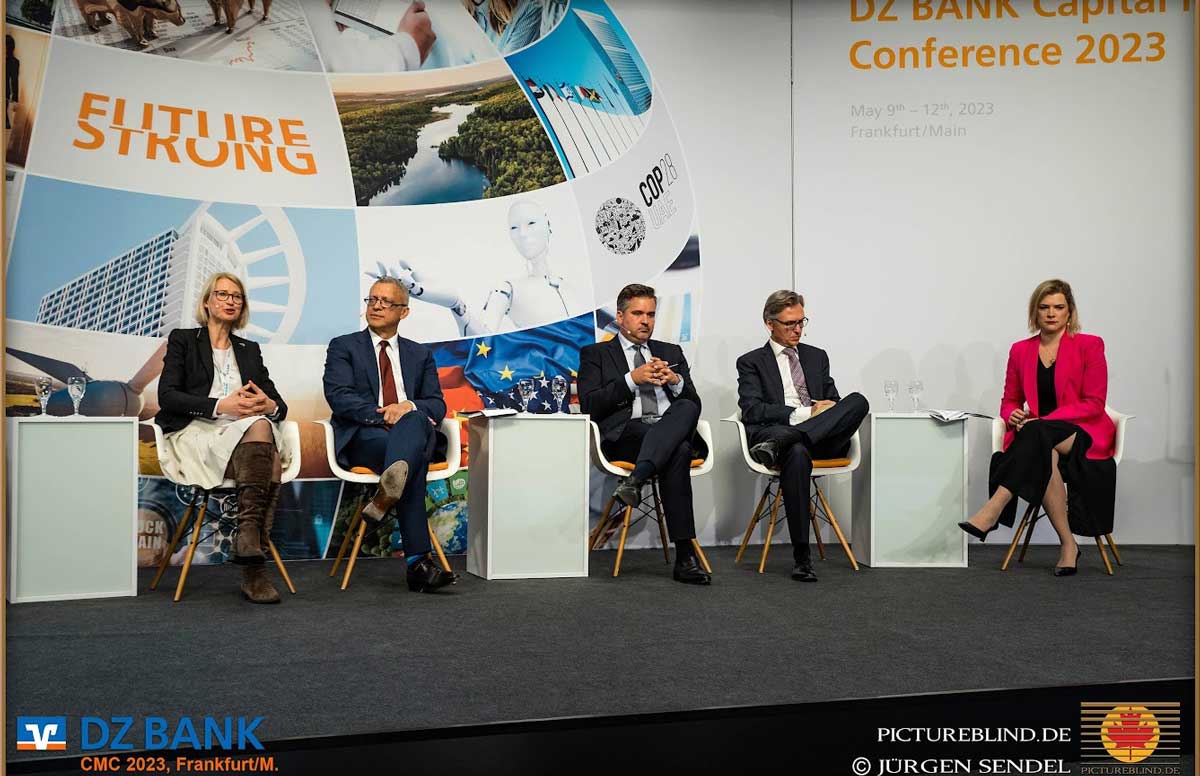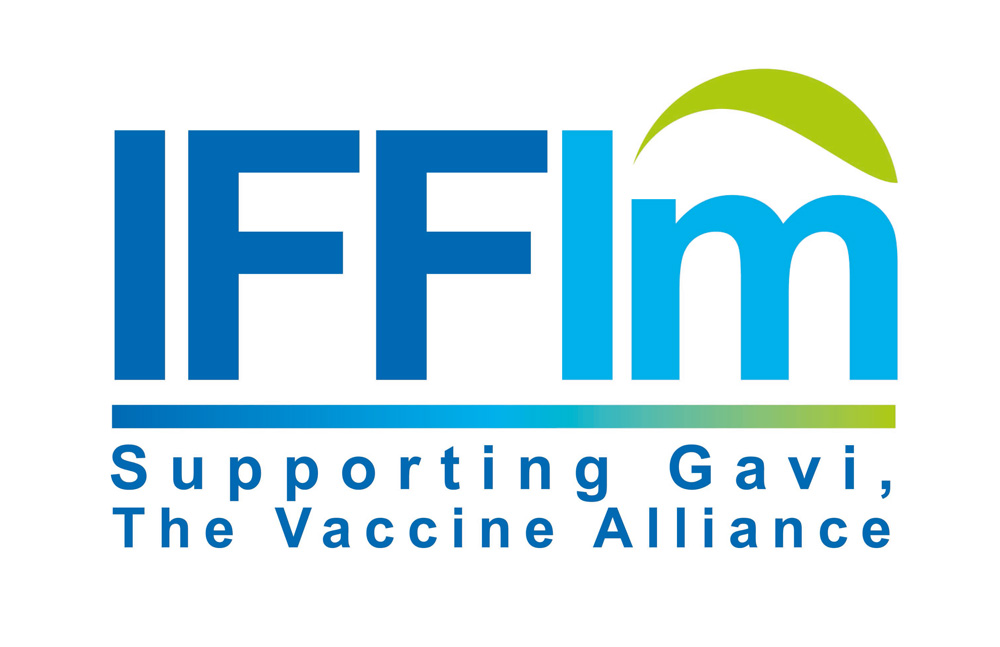The need for humanitarian funding is huge. So why aren’t there more IFFIms?
The need for humanitarian funding is huge. So why aren’t there more IFFIms?
20 December 2023

Ingrid van Wees at the DZ Bank Capital Markets Conference in Frankfurt, Germany on 9 May. Credit: J Sendel.
By Ingrid van Wees, IFFIm Board Member.
It's now been 17 years since the International Finance Facility for Immunisation - IFFIm - came to market with its first bond issue, frontloading over 20 years of forward pledges from 6 sovereign donors. Since then, IFFIm has expanded its sponsorship to 11 donors and has raised US$ 8.7 billion in international capital markets, funding the crucial vaccination programmes of Gavi, the Vaccine Alliance.
IFFIm's approach was pioneering at the time and remains so: It brings to each of its sovereign donors a much-needed element of flexibility in fiscal management, providing immediate funding for initiatives today that will avoid the need for much larger health-related expenditures in the future, while still spreading its payments over that longer horizon. IFFIm got its start in support of Gavi's childhood vaccination programmes, but over the years has proven its continuing value in funding for the Ebola response, CEPI and COVAX.
An obvious question, of course, is why aren't we seeing more IFFIms? The need for multilateral public capital focused on key environmental and humanitarian priorities has never been greater, and the fiscal challenges facing governments in both developed and developing counties are overwhelming, as well.
It's well understood that the IFFIm model doesn't leverage public capital in the conventional sense. Donors' pledges cover IFFIm's debt service obligations one-for-one with an interest cost. But the timing flexibility it provides is tremendously valuable, and its multilateral donor base and conservative financial policies support funding costs only slightly less attractive than the top-rated sovereigns, The World Bank and other multilateral development banks. Neither has IFFIm required its donors to set up a whole new institution: The World Bank Treasury administers its funding and invests its reserves, enabling IFFIm's donors to build on the Bank's more than 75 years of experience in global financial markets.
The technicalities can be challenging, and dependent on the particulars of each donor's fiscal policies and administration. IFFIm has benefitted, for example, from budget-accounting guidance in the EU recognising that forward payments for Gavi by EU member countries can be charged to national accounts when paid, not all up front, thus more effectively matching payments with the future benefits they support. In other countries, budget accounting has required pledges to be charged against the budget when made, not when paid, creating a short-term burden that potential IFFIm donors have found unduly onerous.
Despite the benefits, three key enabling conditions are essential for a financial instrument like IFFIm to flourish:
First is cost efficiency. To be cost efficient, an issuer must secure financing at a substantial scale. The fragmented nature of social and humanitarian sectors poses a challenge, reducing annual donations per organisation and making capital market issues prohibitively expensive. While some organisations may have the necessary programmatic volume for a dedicated facility, collaboration on multiple levels is essential for the model’s success.
The bond interest rate is determined by the credit rating of the issuer. The interest rate of vaccine bonds is minimised by the AA credit rating of the issuer, IFFIm. This credit rating is significantly influenced by the robustness of its sovereign donors. However, it's noteworthy that a strong credit rating can also be attained through alternative means.
On the bond market side, efficiency means regular market presence. Irregular participation may hinder the generation of excitement and investor interest. To address a lack of presence, an issuer not only needs consistent scale; it needs a really compelling story such as the opportunity to invest in saving children’s lives through immunisation, to maintain market engagement and appeal to investors.
Although scale and market presence might be hard to achieve individually, they could be achieved through a vehicle serving the needs of a related humanitarian or social interventions which have a high economic return. IFFIm funds not only Gavi, through Gavi, also some programmes of CEPI, the Coalition for Epidemic Preparedness Innovations, which researches and develops vaccines for deadly diseases. Another alternative to be explored is assignment of the donor pledges to a third party that issues the bond.
The second condition is cost-effectiveness, where the economic value of assistance should surpass the total cost of frontloading operations. This is particularly relevant during periods of high interest rates.
Vaccine frontloading is very cost-effective. For each US$ 1 spent on immunisation in low- and middle-income countries, US$ 52 is saved in healthcare costs, lost wages and lost productivity due to illness and death, when economic benefits are also factored in.1 This robust economic return on investment allows for covering operational frontloading costs, interest payments, and other financial inefficiencies.
The third crucial condition is the political will of donors to commit to future donations, transcending current and future political leadership. IFFIm, established in the early 2000s during a global focus on poverty, emerged as a response to the question of what wealthier nations could do. Presently, there is growing political interest in long-term assistance, for example in relation to special groups affected by climate change. In this and other scenarios, a frontloading mechanism like IFFIm could be a game changer.
These issues can be addressed, as IFFIm has shown. What we need now is an active discussion about priorities that the IFFIm model can help address. This is starting to happen, notably in recent discussions about how to address land mine clearance in Ukraine and, of course, climate change, both of which are obvious examples of ways in which a major upfront investment could yield important future benefits.
Ingrid van Wees is a member of the board of the International Finance Facility for Immunisation, and the former vice president for finance and risk management of the Asian Development Bank.
1 https://www.cdc.gov/globalhealth/immunization/data/fast-facts.html
Share this article
Restricted Access Library
 The material in this Restricted Access Library is intended to be accessed only by persons with residence within the territory of a Member State of the European Union and is not intended to be viewed by any other persons. The material in this Restricted Access Library is provided by IFFIm for information purposes only and the materials contained herein were accurate only as of their respective dates. Certain information in the materials contained herein is not intended to be, and is not, current. IFFIm accepts no obligation to update any material contained herein.
The material in this Restricted Access Library is intended to be accessed only by persons with residence within the territory of a Member State of the European Union and is not intended to be viewed by any other persons. The material in this Restricted Access Library is provided by IFFIm for information purposes only and the materials contained herein were accurate only as of their respective dates. Certain information in the materials contained herein is not intended to be, and is not, current. IFFIm accepts no obligation to update any material contained herein.
Persons with residence outside the territory of a Member State of the European Union who have access to or consult any materials posted in this Restricted Access Library should refrain from any action in respect of the securities referred to in such materials and are otherwise required to comply with all applicable laws and regulations in their country of residence.
By clicking Access restricted content: DYNAMIC-LINK-TEXT I confirm that I have read and understood the foregoing and agree that I will be bound by the restrictions and conditions set forth on this page.
The materials in this Restricted Access Library are for distribution only to persons who are not a "retail client" within the meaning of section 761G of the Corporations Act 2001 of Australia and are also sophisticated investors, professional investors or other investors in respect of whom disclosure is not required under Part 6D.2 of the Corporations Act 2001 of Australia and, in all cases, in such circumstances as may be permitted by applicable law in any jurisdiction in which an investor may be located.
The materials in this Restricted Access Library and any documents linked from it are not for access or distribution in any jurisdiction where such access or distribution would be illegal. All of the securities referred to in this Restricted Access Library and in the linked documents have been sold and delivered. The information contained herein and therein does not constitute an offer for sale in the United States or in any other country. The securities described herein and therein have not been, and will not be, registered under the U.S. Securities Act of 1933, as amended (the "Securities Act"), and may not be offered or sold in the United States except pursuant to an exemption from, or in a transaction not subject to, the registration requirements of the Securities Act and in compliance with any applicable state securities laws.
Each person accessing the Restricted Access Library confirms that they are a person who is entitled to do so under all applicable laws, regulations and directives in all applicable jurisdictions. Neither IFFIm nor any of their directors, employees, agents or advisers accepts any liability whatsoever for any loss (including, without limitation, any liability arising from any fault or negligence on the part of IFFIm or its respective directors, employees, agents or advisers) arising from access to Restricted Access Library by any person not entitled to do so.
"Relief" for mothers in Bayelsa state as malaria vaccine makes waves
07 November 2025
